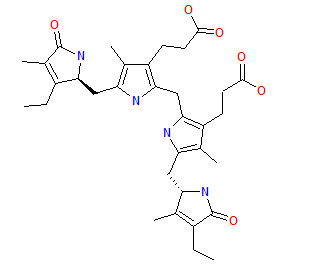Urobilinogen In Urine | Normal & Abnormal Levels
Urobilinogen in urine is created in the intestines by bacteria in the duodenum and is a colorless by product of bilirubin reduction. Elevated levels or an abnormally high or low level of urobilinogen in the urine can be cause for concern.

Bilirubin Reduction
Some urobilinogen is absorbed through the liver and passed through the urine through bilirubin reduction and a normal level completely safe for the body.
Treatment for low or high amounts will differ depending on the cause of the abnormal levels so seeking the counsel of a qualified medical professional is important.
Low & High Range Chart
- 0.2 – 1.0 mg/dL Range - Normal Urobilinogen Levels
- Less than 0.2 mg/dL Range - Low Urobilinogen Levels
- 1.0 mg/dL Range - Elevated Urobilinogen Levels
Safe Amounts
Normal urobilinogen levels in the urine are less than 17 umol/l or less than 1mg/dl, and a level of 0 – 8 mg/dl are normally found in the body and no cause for concern.
Urine in the average adult contains about 0.02 mg/dL of bilirubin which is also completely normal but higher levels can indicate a problem or issue in the body that needs diagnosed.
Elevated Level Or Higher Than 17 umol/l
Elevated levels of urobilinogen in the urine, or a level higher than 17 umol/l or 0-8 mg/dl or a bilirubin level higher than 0.02 mg/dL are abnormal and may indicate a medical problem that needs attention and may require further diagnosis.
An elevated urobilinogen level of 2.0 mg/dL in the urine for example would be a transition from normal range to abnormal or unusually high range.
Elevated or unusually high levels of bilirubin in the urine can cause jaundice due to the yellowish pigment of bilirubin, among other more serious health problems.
Low Or Less Than 0.2 mg/dL
A low level of urobilinogen is less than 0.2 mg/dL in the urine is considered in the low range. A level of less than 0.2 mg/dL could be an indication of a serious health problem and also requires further diagnosis.
